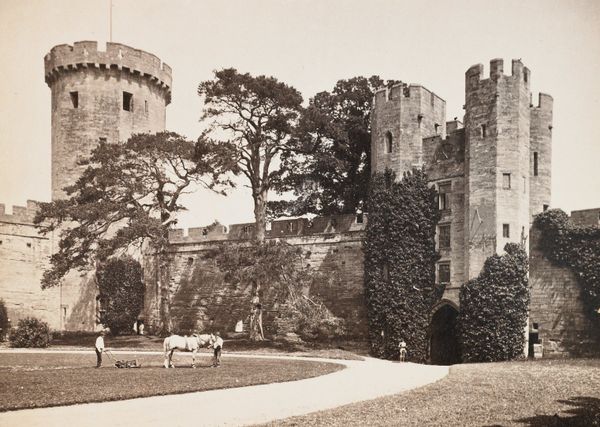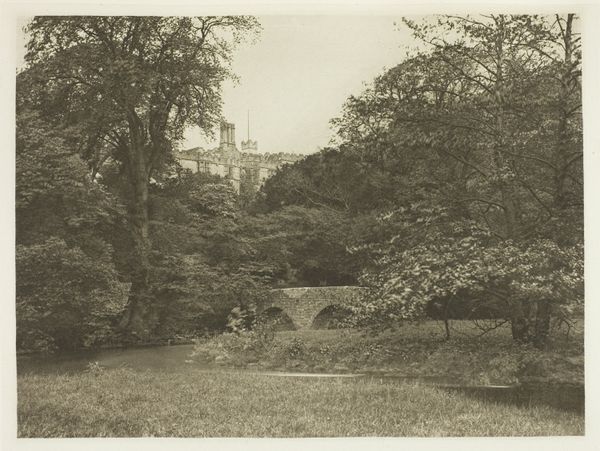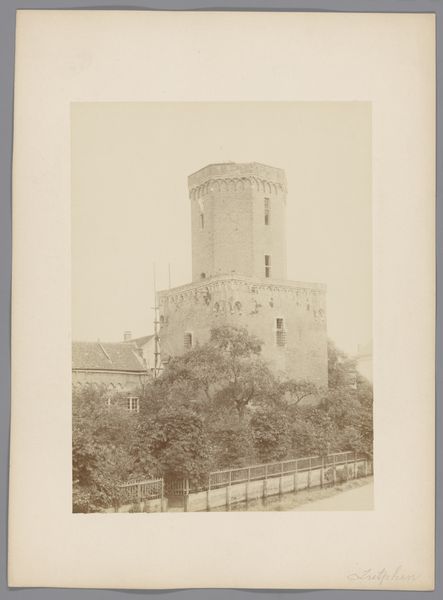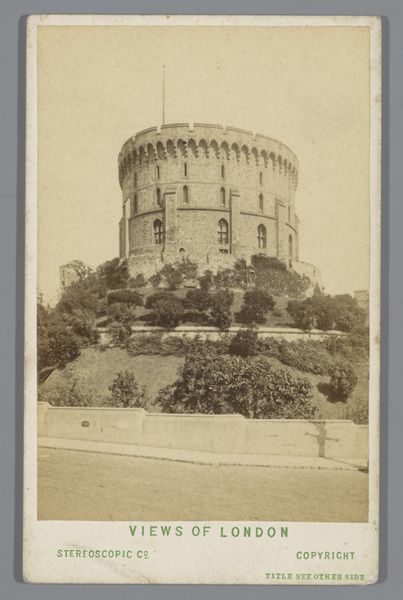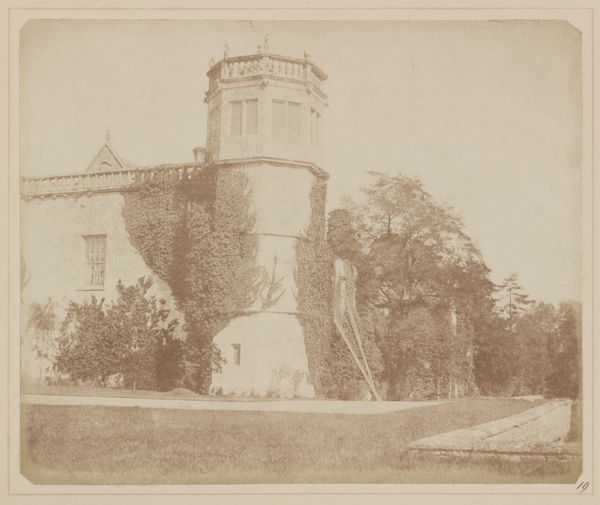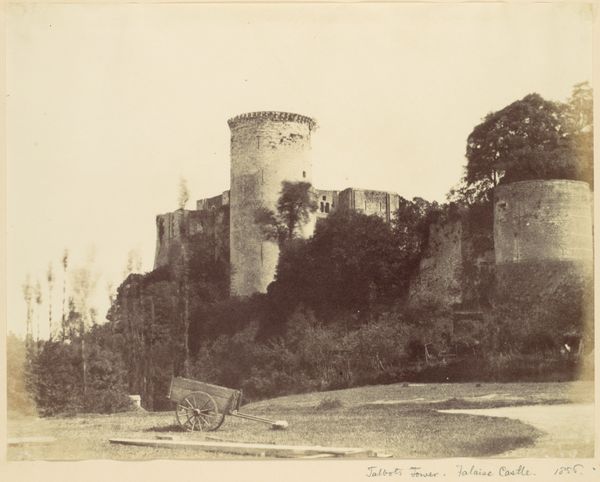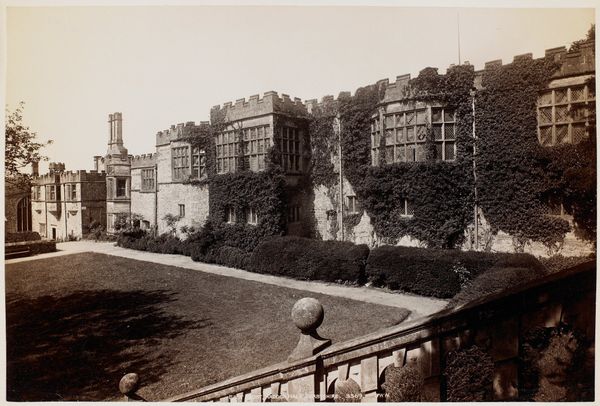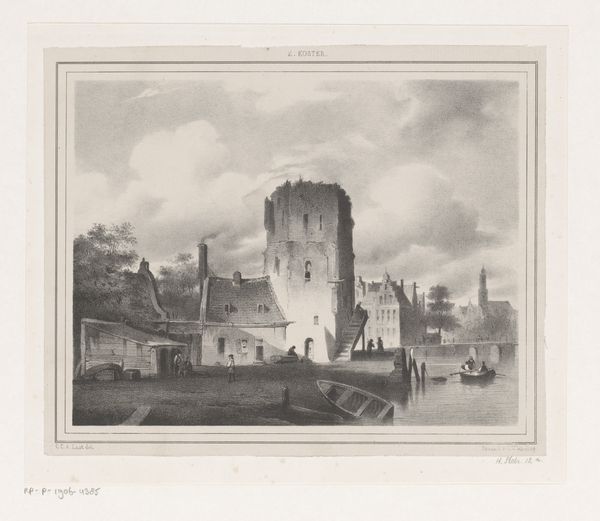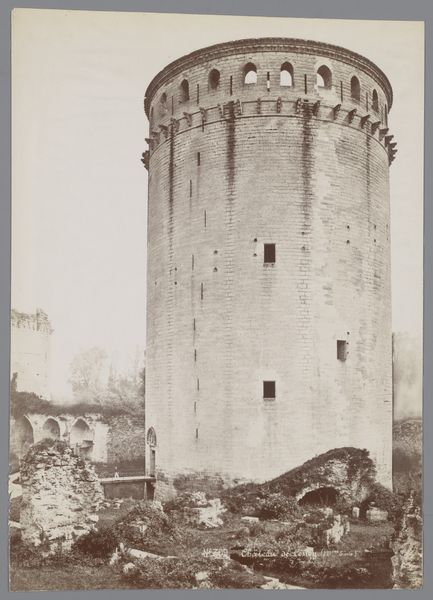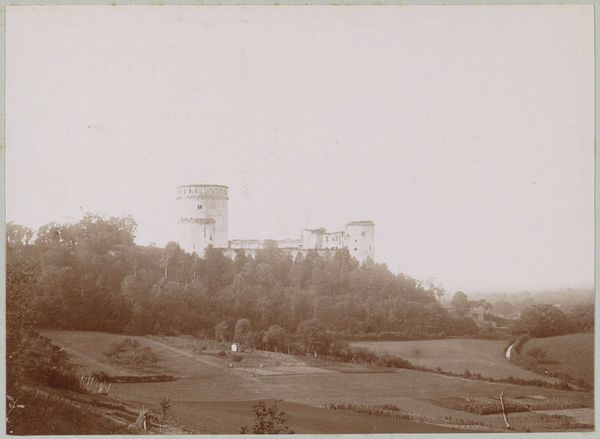
print, photography, albumen-print
#
16_19th-century
# print
#
landscape
#
photography
#
romanesque
#
historical photography
#
albumen-print
Dimensions: 15.6 × 21.1 cm (image); 16.4 × 21.4 cm (paper)
Copyright: Public Domain
Curator: This is "Warwick Castle, from the Outer Court," an albumen print by Francis Bedford, made sometime between 1860 and 1894. It's currently held in the collection of the Art Institute of Chicago. Editor: Immediately, the contrast grabs me. It's so lush and dark in the foreground, that my eye struggles at first to penetrate to those monumental towers. The picture evokes the romantic Victorian obsession with the medieval. Curator: It’s intriguing to see a castle rendered through photography, capturing a relatively recent perspective on historical might and permanence. Bedford has certainly considered how the shadows interplay to evoke a sense of time. Editor: True, it begs the question: What narratives does the framing promote, and whose voices are consciously obscured? The overwhelming presence of the flora naturalizes the structure in its current decayed state. What kind of history is being sanitized here? Curator: I find something beautiful in how the architecture, stone, and even the positioning of those trees feels deliberate. It makes me consider our emotional connection to history, how these images trigger feelings of awe, safety, or even sorrow depending on our background and ancestral ties to such symbols. It's not simply about facts but about resonant echoes. Editor: And perhaps that's exactly the danger—idealizing history rather than confronting its brutal realities. We’re left contemplating aesthetics while ignoring social implications and power dynamics that shaped spaces like Warwick Castle. It really calls on me to ponder the artist's gaze. Bedford had access to many places that most people could not dream of and made choices in what he wanted to display. It raises the question of audience then as now, who is this for? Curator: These photographs helped to build the modern ideas about legacy and national identity and show what we want the world to see about us. The power of photography to record history means that this albumen print from all those years ago leaves a lasting mark. Editor: Exactly. Even a landscape, a seemingly neutral view, communicates a narrative. By recognizing these historical, ideological frameworks, we gain a richer and more complete view. I like leaving that as a lasting impression.
Comments
No comments
Be the first to comment and join the conversation on the ultimate creative platform.
